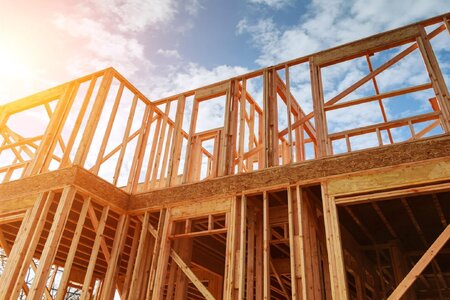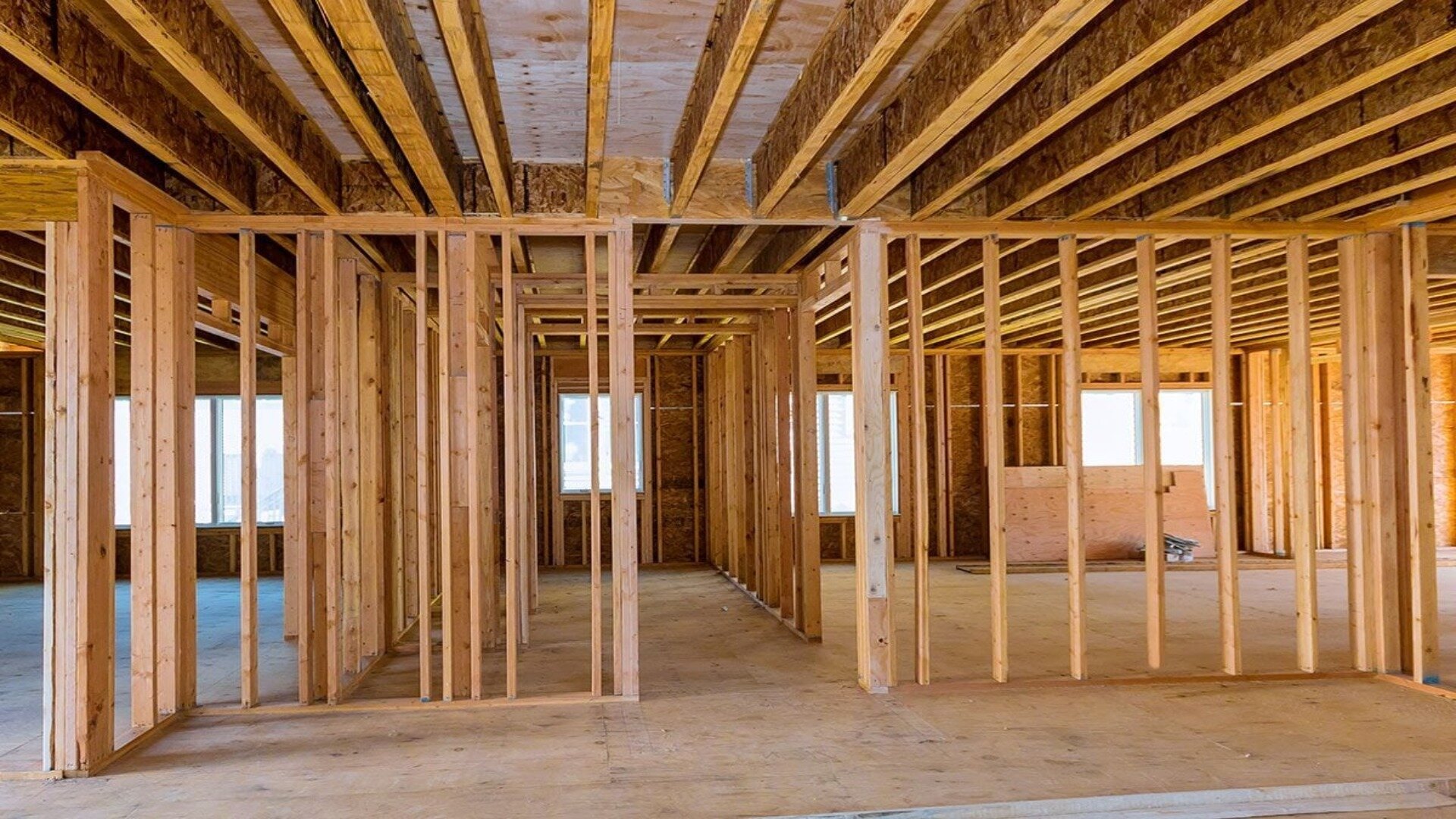Understanding load-bearing walls is crucial for both homeowners and builders to ensure the safety and stability of a building. These walls bear the weight of the floors, roof, and other structural components, distributing the loads down to the foundation.
Let’s look into the fundamentals of load-bearing walls in residential framing, exploring their significance, identification methods, and the importance of seeking professional guidance. Whether you’re a homeowner planning renovations or a builder looking to enhance your knowledge, this guide will equip you with the essential insights needed to navigate the world of load-bearing walls effectively.
So, let’s embark on a journey to unravel the secrets behind load-bearing walls and discover their vital role in the construction of our homes.
The Role of Load-Bearing Walls
Load-bearing walls play a pivotal role in the structural integrity of residential buildings. These walls serve as the backbone of the construction, shouldering the weight of the floors, roof, and other structural elements. Their primary function is distributing the vertical and horizontal loads imposed on the building, ensuring stability and preventing structural failures. By effectively transferring the weight to the foundation, load-bearing walls create a sturdy framework supporting the entire structure.
![2024 01 Bearing Wall Studs Bearing Wall Studs]()
A home’s exterior walls and interior walls act as barriers against the forces on external walls, such as wind and seismic activity, and resist deformation and settling. In addition, load-bearing walls contribute to the overall rigidity of the building, minimising flexing and reducing the risk of cracks or sagging over time.
Recognising the critical role of load-bearing walls allows homeowners and builders to make informed decisions when it comes to renovations, additions, or structural modifications, ensuring that the integrity of the building remains intact.
Identifying Load-Bearing Walls
Identifying load-bearing walls is essential when planning any structural changes or renovations in a residential building. There are several methods to determine whether an exterior wall or internal wall is load-bearing or not.
One approach is to visually inspect the wall’s position and orientation in relation to the overall structure. Load-bearing walls typically run perpendicular to floor joists and are often aligned with beams, columns, or other load-transferring elements. If the wall is a masonry wall, it may sometimes be a load-bearing wall. A masonry wall comprises concrete blocks, brick, or other structural masonry products. Not all masonry is structural and capable of bearing loads.
![2024 01 Parts Of Stud Framed Wall House Parts Stud Framed Wall House]()
Another useful tool is consulting architectural plans and blueprints, which can provide valuable insights into the intended load-bearing wall locations. However, the most reliable way to identify load-bearing walls is to seek professional guidance from a structural engineer or a qualified contractor. They have the expertise to conduct a thorough analysis, considering factors such as the building’s design, construction methods, and load distribution.
Their assessment may involve assessing the wall’s thickness, construction materials and examining the structural connections. Proper identification of load-bearing walls is crucial to avoid compromising the building’s stability and safety, making it imperative to rely on expert advice before undertaking any modifications or removals.
Key Concepts in Load-Bearing Wall Construction
![2024 01 Wood Frame Wood Frame]()
Understanding the key concepts in load-bearing wall construction is essential for homeowners and builders alike. One fundamental concept is the concept of load paths. Load-bearing walls transfer vertical wall studs load from the floors, roof, and other structural elements down to the foundation.
They create a clear path for the weight to follow, ensuring that the forces are distributed evenly and safely. Another important concept is the different types of load-bearing wall systems. This can include shear walls, which are designed to resist lateral forces such as wind or earthquakes, and bearing walls, which provide vertical support and carry the weight of the structure above.
The materials used in load-bearing walls can also vary, with common options including wood, steel, or concrete. Each material has its strengths and considerations regarding load-bearing capacity, durability, and construction techniques. Understanding these key concepts allows homeowners and builders to make informed decisions when it comes to designing, constructing, or modifying load-bearing walls, ensuring the long-term stability and safety of the structure.
Load-Bearing Wall Removal and Modification
Removing or modifying load-bearing walls requires careful planning and professional expertise to ensure the structural integrity of the building. Before undertaking any changes, obtaining the necessary permits and adhering to local building codes and regulations is crucial. Hiring a qualified contractor or structural engineer is highly recommended to assess the feasibility of the desired modifications and develop a suitable plan. In some cases, load-bearing walls can be replaced with alternative support systems, such as beams, columns, or engineered solutions, to maintain structural stability.
![2024 01 Determining Load Bearing Wall Determining Load Bearing Wall]()
Reinforcement methods, such as installing additional supports or braces, may be necessary to compensate for the removed wall’s load-bearing capacity. It is essential to consider the impact on other building components, such as electrical, plumbing, and HVAC systems, which may need to be rerouted or adjusted accordingly. Professionals can ensure the necessary calculations and precautions are taken to prevent overloading and potential structural failures. While it may be tempting to embark on DIY projects, non-load-bearing wall removal and modification should always be approached with caution and professional guidance to safeguard the safety and longevity of the structure.
Common Misconceptions and Challenges
![2024 01 LoadBearing LoadBearing]()
There are several common misconceptions and challenges that homeowners and builders may need help with. One common misconception is mistaking non-load-bearing walls for load-bearing ones. Visual cues alone may not provide an accurate assessment, and it is easy to misinterpret a wall’s structural significance.
Another challenge is accurately assessing the load-bearing capacity of a partition wall. Factors such as the wall’s construction materials, thickness, and overall structural design can influence its load-bearing capabilities. It is crucial to consult with a structural engineer or contractor to determine the maximum load a wall can safely support. Additionally, dealing with hidden or concealed load-bearing elements can pose challenges during renovations or modifications.
Structural elements such as beams, columns, or headers may be hidden within walls, making it necessary to exercise caution and consult professionals to avoid compromising the structural integrity of the building.
Structural Strength Unveiled
Understanding load-bearing walls is crucial for homeowners and builders to ensure residential buildings’ safety and structural integrity. Load-bearing walls play a vital role in distributing weight and maintaining the stability of the structure.
By identifying load-bearing walls accurately, homeowners and builders can make informed decisions when planning renovations or modifications. Consulting professionals, such as structural engineers or qualified contractors like Final Touch Carpentry and Construction, are highly recommended to navigate the complexities of load-bearing walls effectively.
Final Touch Carpentry and Construction is here to assist you if you’re considering a home renovation expansion or simply want to gain a deeper understanding of load-bearing walls. Our team of experts has extensive experience in residential framing and can provide professional guidance tailored to your specific project. We prioritise safety, quality, and customer satisfaction, ensuring that your construction endeavours are executed precisely and carefully.
Don’t hesitate to contact Final Touch Carpentry and Construction today to discuss your load-bearing wall needs. Our team is ready to answer your questions, offer expert advice, and provide the exceptional services you deserve. Together, we can ensure that your residential framing projects are successful, reliable, and built to last.
FAQs
What is the purpose of load-bearing walls in residential framing?
Load-bearing walls play a crucial role in supporting the structural integrity of a building. They bear the weight of the floors, roof, and other structural elements above, transferring the loads to the foundation. With load-bearing walls, the building’s stability and safety would be protected.
How can I identify if a wall is load-bearing or not?
There are several ways to identify load-bearing walls. Visual clues such as walls that run perpendicular to floor and ceiling joists, roof trusses, or walls that align with beams or columns often indicate load-bearing walls. Consulting architectural plans and blueprints can also provide valuable information. However, the most reliable approach is to seek professional guidance from a qualified structural engineer or contractor who can conduct a thorough analysis and provide an accurate assessment.
Can load-bearing walls be removed or modified?
Removing or modifying load-bearing walls requires careful consideration and professional expertise. In some cases, load-bearing walls can be replaced with alternative support systems such as beams, columns, or engineered solutions.
However, consulting with a structural engineer or contractor is essential to ensure the necessary reinforcements are in place to maintain the building’s structural integrity. Obtaining the required permits and adhering to local building codes and regulations is also crucial when changing load-bearing walls.







